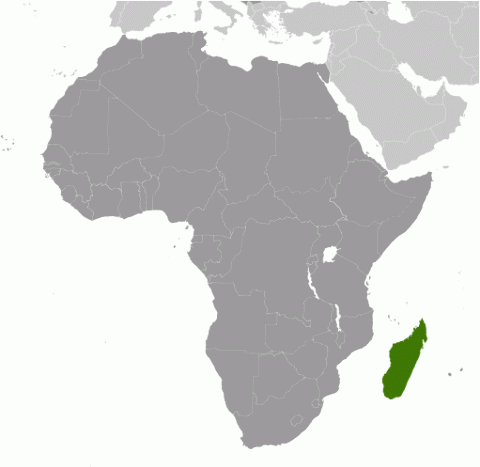Child Labor and Forced Labor Reports
Madagascar


Moderate Advancement
In 2024, Madagascar made moderate advancement in efforts to eliminate the worst forms of child labor. The government ratified a new labor code that strengthened various labor protections, including by enhancing administrative procedures for labor inspections of homes with domestic workers. The Ministry of Labor subsequently held training sessions for labor inspectors across the country on the code’s new provisions. In addition, the government prosecuted 11 individuals for sex trafficking and sentenced 4, including a French national. However, despite these efforts, limited resources for the enforcement of child labor laws may impede government efforts to protect children from the worst forms of child labor. In addition, Madagascar does not have a current national action plan for the elimination of child labor. Finally, social programs are insufficient to address the extent of child labor in relevant sectors, including agriculture, domestic work, begging, mining, and the commercial sexual exploitation of children.
| Children | Age | Percent and Population |
|---|---|---|
| Working | 5 to 14 | 42.8% (3,109,697) |
| Boys | 41.6% | |
| Girls | 46.4% | |
| Urban | 30.1% | |
| Rural | 45.5% | |
| Hazardous Work by Children | 15 to 17 | 11.0% (204,780) |
| Boys | 10.8% | |
| Girls | 11.8% | |
| Urban | 8.7% | |
| Rural | 11.7% | |
| Attending School | 5 to 14 | 70.1% |
| Combining Work and School | 7 to 14 | 31.8% |
| Sector/Industry | Percent of Population |
|---|---|
| Agriculture | 91.1% |
| Industry | 3.1% |
| Services | 5.8% |
| Sector/Industry | Activity |
|---|---|
| Agriculture | Farming, including the production of vanilla, and fishing. |
| Industry | Mining† mica, sapphires, and stones. |
| Services | Domestic work; street work, including begging, market vending, transporting goods, and cleaning the marketplace. |
| Categorical Worst Forms of Child Labor‡ | Forced labor in mining, fishing, quarrying, begging, and domestic work; commercial sexual exploitation, sometimes as a result of human trafficking; and use in the production of pornography. |
† Determined by national law or regulation as hazardous and, as such, relevant to Article 3(d) of ILO C. 182.
‡ Child labor understood as the worst forms of child labor per se under Article 3(a)–(c) of ILO C. 182.
Children at Higher Risk
Cyclones and droughts in the southern region of Madagascar have exacerbated food insecurity and poverty, increasing children’s vulnerability to labor exploitation. Due to drought and food insecurity, children moved with their families to or joined relatives in Nosy Be. These displaced children may be more vulnerable to child labor. In addition, research suggests that homeless children in Madagascar’s cities are at higher risk of child sex trafficking. Finally, children with disabilities are often subject to forced begging.
Barriers to Education Access
Access to education is often limited for some children, which also increases their vulnerability to child labor. Although the constitution guarantees free compulsory education, some public schools require parents to pay informal fees to subsidize teacher salaries and operating costs. In addition, some girls face difficulties remaining in school due to a lack of appropriate hygiene facilities and feminine hygiene products. Additional barriers to education include a lack of school infrastructure, insufficient numbers of teachers, food insecurity, and limited transportation to schools in rural areas.
| Standard | Age | Meets International Standards | Legislation |
|---|---|---|---|
| Minimum Age for Work | 16 | ✓ | Article 24 of the Constitution; Articles 147 and 360 of the Labor Code; Article 2 of Decree 2018-009 |
| Minimum Age for Hazardous Work | 18 | ✓ | Articles 148 and 149 of the Labor Code; Article 10 of Decree 2007-563 |
| Identification of Hazardous Occupations or Activities Prohibited for Children | ✓ | Articles 147 and 360 of the Labor Code; Articles 10, 12, and 16–22 of Decree 2007-563; Article 19 of Decree 2018-009 | |
| Prohibition of Slavery, Debt Bondage, and Forced Labor | ✓ | Articles 4 and 5 of the Labor Code ; Articles 1, 8, and 18 of Law 2014-040; Article 15 of Decree 2007-563; Articles 333 and 335 of Law 2007-038; Article 19 of Decree 2018-009 | |
| Prohibition of Child Trafficking | ✓ | Articles 15 and 23 of Decree 2007-563; Articles 333 and 335 of Law 2007-038; Articles 1, 6, 8, 13, and 22 of Law 2014-040 | |
| Prohibition of Commercial Sexual Exploitation of Children | ✓ | Articles 13, 23, and 24 of Decree 2007-563; Article 335 of Law 2007-038; Article 1 of Law 2014-040 | |
| Prohibition of Using Children in Illicit Activities | ✓ | Articles 11, 14, and 23 of Decree 2007-563 | |
| Minimum Age for Voluntary State Military Recruitment | 18 | ✓ | Article 11 of Ordinance No. 78-002 |
| Prohibition of Compulsory Recruitment of Children by (State) Military | N/A | ||
| Prohibition of Military Recruitment by Non-state Armed Groups | ✓ | Articles 15 and 23 of Decree 2007-563 | |
| Compulsory Education Age | 16‡ | ✓ | Article 24 of the Constitution; Article 39 of Law 2008-011 |
| Free Public Education | ✓ | Article 23 and 24 of the Constitution |
‡ Age calculated based on available information
In 2024, Madagascar ratified a new labor code that strengthened various labor protections, including by enhancing administrative procedures for labor inspections for homes with domestic workers.
| Organization/Agency | Role & Activities |
|---|
| Ministry of Civil Services and Labor’s Division for the Prevention, Abolition, and Monitoring of Child Labor: Enforces child labor laws, coordinates and evaluates efforts to eliminate child labor, and oversees national and regional child labor coordination committees. During the reporting period, the Ministry of Labor continued to administer a 40-hour course on child labor as part of the labor inspectorate’s introductory training, and it held several additional workshops to train the labor inspectorate on the new labor code. However, research indicates that Madagascar still does not have an adequate number of labor inspectors to carry out their mandated duties. |
| Ministry of Justice: Enforces laws pertaining to violence against children, including human trafficking and commercial sexual exploitation. During the reporting year, Madagascar prosecuted 11 individuals for suspected sex trafficking and convicted 4 individuals, including a French national. Due to insufficient resources to adequately conduct investigations, the Ministry of Justice tends to try cases involving children as child abuse rather than under the relevant laws for child trafficking or the worst forms of child labor. |
| Overview of Enforcement Efforts | 2024 |
|---|---|
| Has a Labor Inspectorate | Yes |
| Able to Assess Civil Penalties | Yes |
| Routinely Conducted Worksite Inspections | Yes |
| Unannounced Inspections Permitted | Yes |
| Has a Complaint Mechanism | Yes |
| Imposed Penalties for Child Labor Violations | Unknown |
| Conducted Criminal Investigations for Worst Forms of Child Labor Crimes | Yes |
| Imposed Penalties for Worst Forms of Child Labor Crimes | Yes |
In 2024, 235 labor inspectors conducted 938 worksite inspections. The government also conducted an unknown number of investigations and prosecutions into suspected worst forms of child labor crimes, and it is unknown how many perpetrators were convicted.
| Coordinating Body | Role & Activities |
|---|
| National Committee to Combat Child Labor: Coordinates programs, advises on child labor legislation and regulations, and supports regional child labor committees. Regional committees also work to identify activities to gather data; promote the elimination of child labor; and coordinate, monitor, and evaluate efforts. During the reporting year, the regional committees participated in awareness-raising events, including for the World Day Against Child Labor. |
| Policy | Description & Activities |
|---|
| Joint Action Plan to Address Issues Affecting Children and Households in Mica Exploration in the Anosy Region: Aims to reduce child labor in the production of mica in the southern region. During the reporting year, the Ministry of Labor, with the support of the NGO Pact Madagascar, held a workshop to assess the progress of the Joint Action Plan. |
| National Action Plan on Trafficking in Persons: Outlines strategy and policy to address trafficking in persons. Emphasizes prevention, social and economic services for survivors, prosecution of traffickers, improvement of screening, training for front-line officials, and coordination between government ministries and partners. During the reporting period, the National Office to Combat Trafficking in Persons held two workshops to present a new implementation plan with tasks delegated to each relevant ministry. |
| Code of Conduct for the Protection of Children in the Tourism Industry: Implemented by the Ministry of Tourism and supported by ILO and UNICEF, aims to prevent the commercial sexual exploitation of children in the tourism sector. During the reporting period, the Ministry of Tourism continued to monitor compliance with the Code of Conduct in tourist destinations, including Nosy Be. |
| Program | Description & Activities |
|---|
| Social Support and Reintegration Programs:‡ Include government programs that provide social and reintegration services for survivors of child labor exploitation, such as the Ministry of Labor’s Manjary Soa Center, which provides educational support and other services to survivors of child labor, and the Center for Emergency Shelter Service (Centre d’Accueil d’Urgence) in Antananarivo, which assists children referred by the police, including children exploited in domestic work and other urban sectors. In addition, the Ministry of Population’s approximately 765 child protection networks coordinate with NGOs to provide lodging and other services to survivors of trafficking in persons, including children. However, research suggests that due to resource constraints, only about 455 child protection networks provided assistance through public hospitals and health units and most networks refer victims to international organizations and NGOs. |
| Education and School Canteen Programs: Provide access to meals in school and reintegrate out-of-school children into the education system. Include school canteen programs coordinated with the Ministry of National Education and funded by partners, including the World Food Program and the World Bank; Mavitrika Mianata, a school canteen program run by Catholic Relief Services and Global Communities with funding from the U.S. Department of Agriculture; and remedial classes, run by the Ministry of Education with UNICEF support, to reintegrate out-of-school children into the public school system. During the reporting period, the Mavitrika Mianata program provided meals to more than 80,805 children in the southern and southeastern regions of the country. |
‡ Program is funded by the Government of Madagascar.
| Area | Suggested Action |
|---|---|
| Enforcement | Publish complete labor law enforcement information related to child labor, including the number and types of labor inspections conducted, the number of violations found, and the number of penalties imposed and collected on an annual basis. |
| Ensure that labor inspectors receive adequate training on child labor in the informal sector, the 2018 updated hazardous work list, and indicators of trafficking in persons, including child trafficking. Increase the number of labor inspectors from 235 to 307 to ensure adequate coverage of the labor force of approximately 12.2 million people. Ensure that the labor inspectorate receives adequate funding, including for transportation, to conduct inspections in rural areas and the informal sector. | |
| Develop, disseminate, and implement official standard operating procedures to identify and refer cases of human trafficking, and proactively screen vulnerable populations, including child laborers, for trafficking indicators. | |
| Implement a digital tracking system for civil worst forms of child labor inspections. | |
| Publish criminal law enforcement data on the number of investigations, prosecutions, and convictions, and penalties imposed for violations concerning the worst forms of child labor. | |
| Ensure that criminal law enforcement agencies have sufficient staff, equipment, and transportation to address the worst forms of child labor. | |
| Ensure that criminal offenses related to the worst forms of child labor are investigated and prosecuted under the relevant laws. | |
| Coordination | Ensure that the National Committee to Combat Child Labor and regional child labor committees receive adequate funding to carry out their mandates. |
| Government Policies | Adopt a comprehensive national policy to address child labor. |
| Social Programs | Enhance efforts to eliminate barriers and make education accessible for all children, including those in rural communities, by removing informal fees; improving school infrastructure, nutrition programs, staffing, and transportation services; and providing access to sanitation facilities and feminine hygiene products. |
| Expand the scope of programs and increase direct government funding to address child labor in agriculture, domestic work, begging, and mining, and the commercial sexual exploitation of children. |





